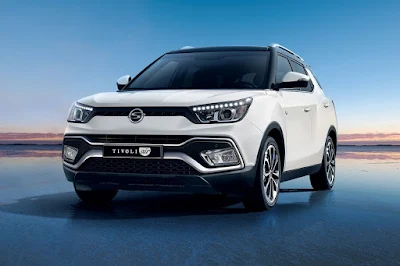Last 2015, at the Frankfurt International Auto Show, Suzuki Motor Corporation showcased a new kind of hatchback with a name fairly familiar to some in the same way the recently launched Ignis compact is. This new Suzuki hatchback is called Baleno and this could be one of the most important cars to spark a revolution to the Japanese car manufacturer that excels in fuel-efficient compacts unlike any other.
 |
| 2016 Suzuki Baleno |
Before I can explain what's what abut the Baleno, let me give you a quick trivia on where this car was made and I'm sure most of your guesses are plainly wrong because it's not in here and it's not even in Hungary either (like today's SX4 S-Cross and the Escudo) because the Baleno is made somewhere in Manesar, India, making it the first Indian-made car to be sold in the Japanese market. Makes perfect sense especially the fact that India played a crucial role in the growth of Suzuki.
Because this is an Indian-made Japanese compact, the styling of the Baleno is not what you called dynamic and striking because from every angle, the Baleno will remind you that it is distinctively Indian. Nothing to see here, it's just a regular Indian tourist trying to accommodate the sights and sounds of Japan.
 |
| 2016 Suzuki Baleno interior |
Despite being too Indian on the exterior, the inside of the Baleno surely makes them shift their judgment and it's rather nice enough to be accommodated with, especially if this is mainly a five-seater car, perfect for being a daily driver's car to live up with you and your small family. Space-wise, the Baleno is rather great indeed to carry a golf cart and some stuff you bought from the supermarket.
 |
| 2016 Suzuki Baleno |
By the time the Baleno went on sale to the Japanese market, the only available engine offered is a 1.2L Dual Jet engine, a dual-injection petrol engine with better thermal efficiency, which produces 91PS of power and 118Nm of torque, and with the CVT equipped, fuel economy is around 24.6kmpl. If they waited 'till May, they can experience one of the most important engines developed by Suzuki, the first-ever turbocharged 1.0L BoosterJet engine which develops 111PS of power and 160Nm of torque, while mated with a 6-speed automatic transmission. For the turbocharged model, fuel economy is expected to be somewhat 20kmpl.
What about dynamics? Well it maybe a globally-competitive compact, but this Indo-Japanese has a lot to learn from the Europeans because while many hatchbacks love to gloat around with their independent suspensions, the Baleno gets suck around with MacPherson struts and coil springs up front and a torsion beam and coil springs in the rear. Despite this setup, it's no surprising the Baleno can balance performance and comfort at ease and what it feels like is like Glico meets Britannia. Delicious.
As for safety, the Baleno is well prepared with features such as Radar Brake Support, ESP, six SRS airbags, and an impact absorbent body.
 |
| 2016 Suzuki Baleno |
The Baleno, sourced from India, starts at 1,414,800 Yen and when you compare it against Japanese cars with dual-citizen status, be it a Nissan March or a Mitsubishi Mirage, its pricing is not a walk in the park but that's not the least of the problem. The only dilemma this new car is facing is how would the Japanese public respond to a car that is sourced from India? Nobody knows where this car is made anyway but they will just treat it like any other car in the world. Let's hope the Indo-Japanese will work its karma here.
Available colors: Arctic White Pearl, Premium Silver Metallic 3, Midnight Black Pearl, Fire Red, Autumn Orange Pearl Metallic, Ray Blue Pearl Metallic, and Urban Blue Pearl Metallic.
Photo: Suzuki Motor Corporation














